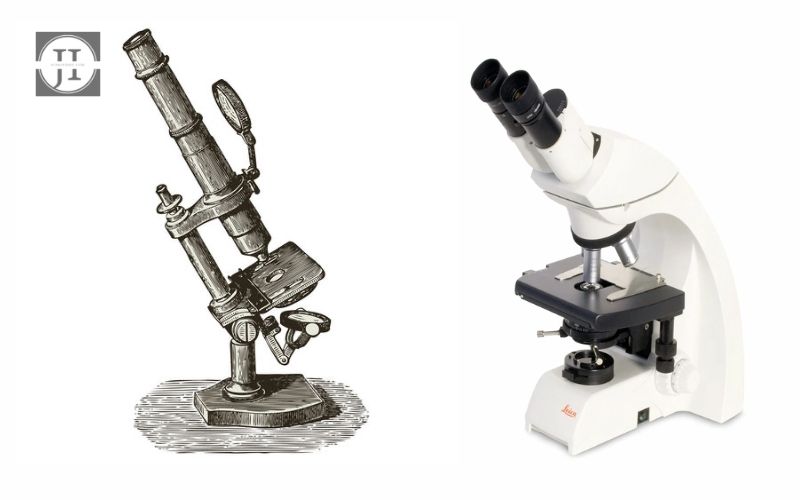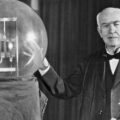The microscope, a powerful tool that continues to shape our understanding of the world, has undergone remarkable transformations throughout history. From the first rudimentary predecessors to the groundbreaking discoveries of optical microscopy, the evolution of this device has revolutionized the world of science. In this blog post, we will delve into the intriguing journey of the microscope, exploring its early beginnings, the pivotal moment of the discovery of optical microscopy, and how the modern microscope has truly transformed the field of science. Join us as we unravel the fascinating story behind this marvellous instrument.
The Predecessors Of The Microscope
The invention of the microscope has revolutionized the field of science. It has enabled scientists to explore the hidden world of microorganisms and delve into the intricate details of cells and tissues. However, before the invention of the modern microscope, there were several predecessors that laid the foundation for this remarkable instrument.
One of the earliest precursor devices to the microscope was the magnifying glass. This simple handheld lens, commonly known as a convex lens, was used by ancient civilizations for magnifying small objects. It allowed them to observe tiny details that were not visible to the naked eye. Despite its limited magnification power, the magnifying glass played a crucial role in inspiring the development of more sophisticated optical instruments.
The medieval period witnessed significant advancements in the field of optics, contributing to the evolution of microscope technology. A notable predecessor during this time was the “reading stone,” a convex-shaped glass lens that improved magnification. It was primarily used by scholars to enhance their reading abilities. These early attempts at magnification laid the groundwork for the development of more complex lenses and optical instruments.
The next significant advancement came with the invention of the compound microscope by Zaccharias Janssen and his father Hans in the late 16th century. This milestone invention involved the use of two convex lenses that magnified the image. Although their microscope had limited magnification, it marked a crucial step in the advancement of microscope technology. The Janssen microscope sparked curiosity and excitement amongst scientists, encouraging further development and refinement of the instrument.
| Year | Advancement |
|---|---|
| 1590 | Hans and Zaccharias Janssen invent the compound microscope |
| 1665 | Robert Hooke’s publication “Micrographia” popularizes the use of the microscope |
| 1830 | Joseph Jackson Lister improves the quality of microscope lenses |
The Discovery Of Optical Microscopy
Optical microscopy, also known as light microscopy, is a groundbreaking scientific technique that has revolutionized the field of biology and other scientific disciplines. This powerful tool allows scientists to observe and study microscopic objects, such as cells and microorganisms, in great detail. But who invented the microscope and initiated this remarkable discovery?
The invention of the microscope is often attributed to the Dutch scientist Antonie van Leeuwenhoek. In the late 17th century, van Leeuwenhoek developed a simple microscope consisting of a single lens, which he used to observe various biological specimens. His observations, including the discovery of microorganisms, significantly contributed to the fields of microbiology and biology as a whole.
Van Leeuwenhoek’s microscope was a significant improvement over the early versions of the microscope, which utilized a grinding process to produce two lenses that were then held together by a metal mount. The use of a single lens allowed van Leeuwenhoek to achieve higher magnification, enabling him to observe previously unseen details within the microscopic world.
One of the key advantages of optical microscopy is its ability to visualize live, dynamic processes within biological samples. This has led to major breakthroughs in cell biology, allowing scientists to study cell division, cellular interactions, and cellular structures in real time.
Another notable milestone in the discovery of optical microscopy was the development of compound microscopes. In the early 17th century, Galileo Galilei and Johannes Kepler described the concept of a compound microscope, which uses multiple lenses to achieve higher magnification. This innovation laid the foundation for the modern compound microscopes that are widely used today.
| Predecessors of the Microscope | Revolutionizing Science With the Modern Microscope |
|---|---|
| The Origins of Microscopy in Antiquity | Introduction of Electron Microscopy |
| The Role of Robert Hooke | Advancements in Fluorescence Microscopy |
| The Contributions of Zacharias Janssen | Super-Resolution Microscopy Techniques |
Overall, the discovery of optical microscopy has had a profound impact on the scientific community, enabling researchers to explore and unravel the hidden world of microscopic organisms and structures. From van Leeuwenhoek’s simple yet powerful single-lens microscope to the modern compound microscopes used today, this field continues to advance and contribute to our understanding of the natural world.
Revolutionizing Science With The Modern Microscope
The invention of the modern microscope has had a profound impact on scientific research and discovery. Prior to the development of this remarkable tool, scientists relied on simple microscopes, which were limited in their ability to magnify objects. It was in the 17th century that the compound microscope, consisting of two or more lenses, was invented and revolutionized the field of microscopy. This breakthrough allowed scientists to explore a whole new world of tiny organisms and structures that were previously invisible to the naked eye.
The modern microscope played a crucial role in advancing our understanding of cellular biology. It enabled scientists to observe and study the intricate details of cells, such as their organelles and cellular processes. This level of magnification and visualization opened up new avenues of research, leading to groundbreaking discoveries in genetics, microbiology, and medicine. For example, the discovery of bacteria and other microorganisms paved the way for the field of microbiology, transforming our understanding of diseases and the development of antibiotics.
Additionally, the modern microscope has greatly contributed to the field of materials science. Scientists can now examine the microscopic structure and properties of various materials, such as metals, polymers, and crystals. This has led to the development of new materials with improved properties and applications in diverse industries, including electronics, aerospace, and medicine.
| Timeline of Microscopy Innovations: | |
|---|---|
| 1590 | Zacharias Janssen invents the compound microscope |
| 1665 | Robert Hooke publishes “Micrographia” featuring detailed illustrations of microscopic organisms |
| 1830s | Improvement in lens quality leads to enhanced resolution and clarity in microscopic images |
| 1873 | Ernst Abbe formulates the mathematical basis for achieving the maximal resolution of a microscope |
| 1931 | Ernst Ruska develops the first electron microscope |
In conclusion, the modern microscope has revolutionized the field of science and significantly impacted various disciplines. Its ability to magnify objects at the cellular and even atomic level has unlocked new possibilities in research and discovery. Through its evolution and continuous improvement, the modern microscope continues to push the boundaries of scientific exploration and deepen our understanding of the microscopic world.












